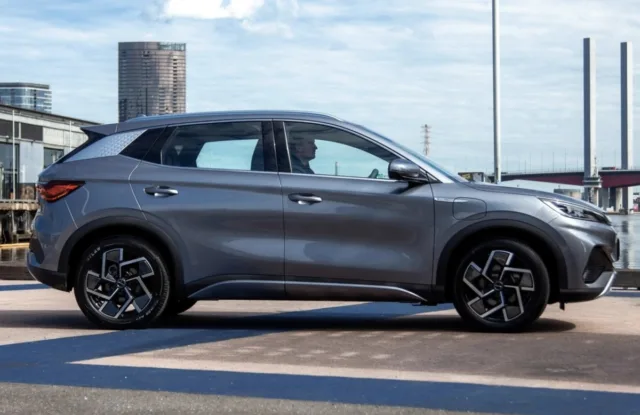
A new range test released on Thursday by the Australian Automotive Association showed that BYD‘s SUV Atto 3 registered the largest discrepancy from its claimed driving range.
The Real-World Testing Program tested five electric models between March and April, concluding that the driving range differed significantly from the manufacturers’ claims, ranging from 5% to 23% less in real-world conditions.
The five seat SUV of the Chinese giant showed the biggest negative difference (23%), claiming a range of 480 km, but delivering only 369 km.
The vehicle consumed 21% more energy per kilometer than the reported 149 Wh/km. It was tested earlier this year in Victoria, in temperatures of around 17ºC (63ºF).
BYD currently offers six models in Australia, including four fully electric and two plug-in hybrids. However, only the Atto 3 SUV was tested by the association.
Tesla‘s Model 3 followed with a 14% distance between the claimed 513 km of autonomy and the actual 441 km it lasted on a single charge.
The vehicle from 2024 was tested in temperatures around 20 to 22ºC (68—71ºF) last April, also in the state of Victoria.
The company’s Model Y was tested in similar conditions in March. The vehicle tested was from 2024, therefore the previous iterarion of the model, and had a 8% change (from the claimed 533 km to 490 km).
It was the same as Kia‘s EV6, which was revamped earlier this year (and reached 484 km, down from the 528 km the brand claimed).
Both models claim the highest ranges among the five EVs tested by the association.
The fifth model in the ranking was the Smart #3, which had a 5% range difference from the 455 km it announces. The vehicle reached 432 km in real-world conditions.
This means that the five electric vehicles tested by the association all showed a negative range discrepancy.
The results differ from a range test conducted earlier this year in Norway, which set Lucid Motors’ Air sedan as the vehicle with the highest range among 27 other EVs — at 832 km — despite also being the model with the largest negative deviation (-13%).
Both the most recent versions of Tesla‘s Model 3 and Model Y showed a positive difference from the claimed ranges. The refreshed Model Y drove 653 km, which is 11.4% more than the 586 km claimed.
The 2023 Chery Omoda 5 model, an internal combustion engine (ICE) vehicle, had a 32% positive rate, while the 2024 Mazda 2 had the highest difference at 35%.
In November 2022, five months after the model debuted in the island, the Atto 3 was awarded a five-star safety rating by the Australian New Car Assessment Program (ANCAP). It was also considered the Drive Car of the Year in 2023.
In July, the BYD Sealion 7 outperformed the Tesla Model Y as the best-selling electric vehicle in the island. The Chinese company sold 1,427 Sealion 7s, nearly the triple of 555 Model Ys.
Year to date, however, Model Y sales total nearly 11,000 units, while BYD‘s SUV — which was launched in February — represents half of those.









